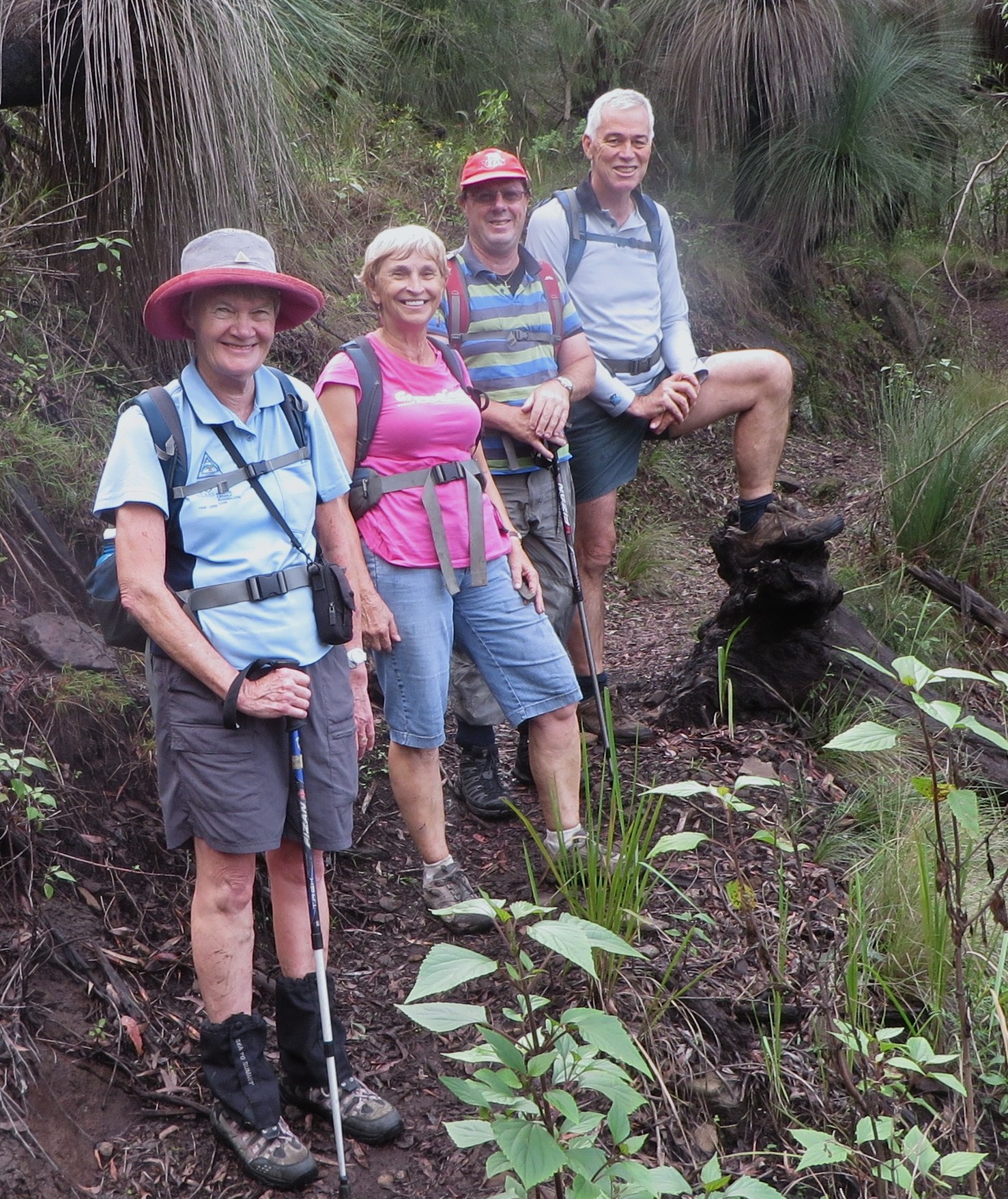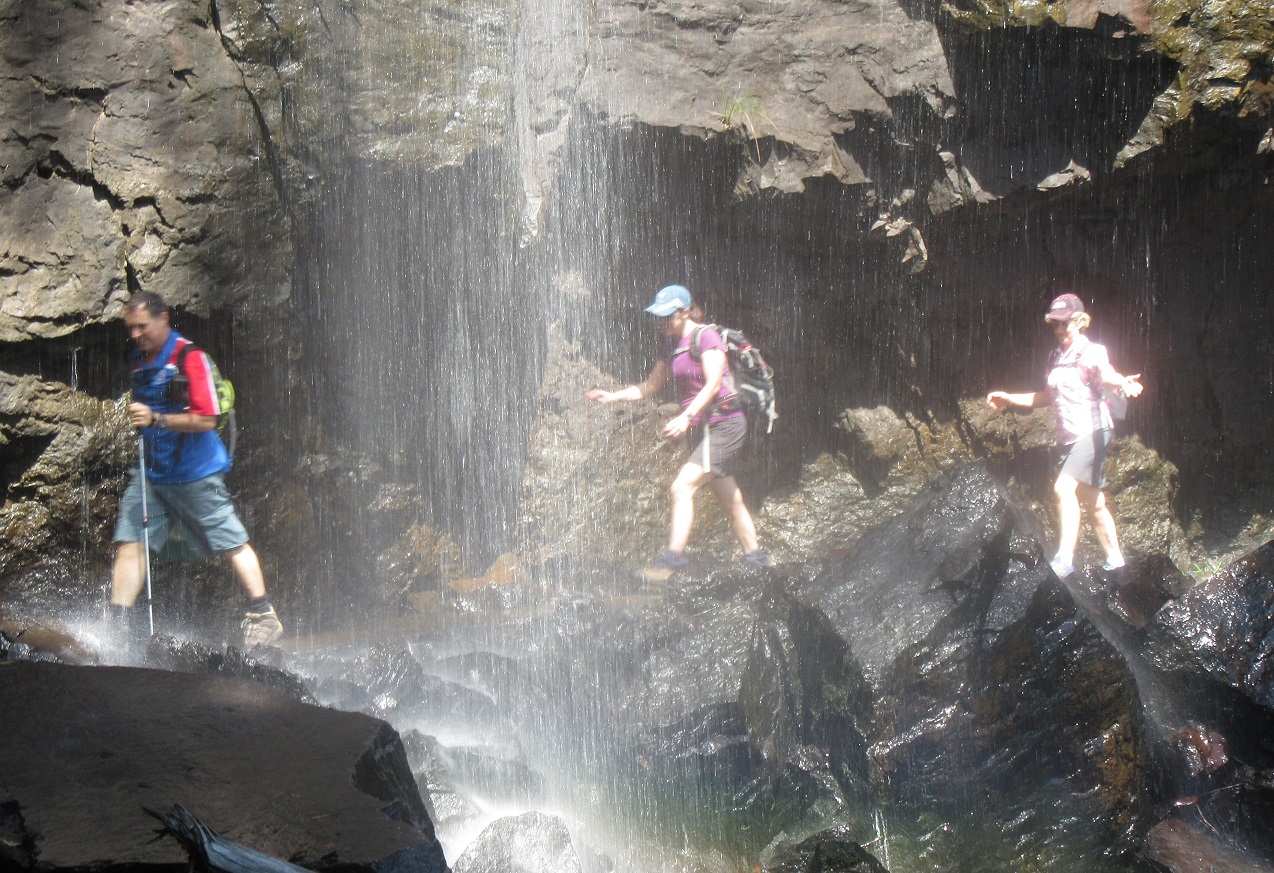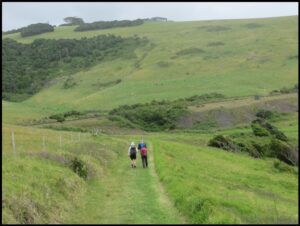Why Join a Club?
The Brisbane Catholic Bushwalking Club Inc
enables walkers to go beyond the recognized tourist spots. Its sixty plus years
of experience provide a breadth and depth of knowledge. Walkers have a common
passion and provide great company for one another. The Club’s procedures and
conventions promote safety, confidence and leadership skills.

Types of Walks
Day Walks depart from Brisbane in the morning and return
the same day. The walks are often on graded tracks and can involve walking to
the summit of a mountain.Overnighters usually occur in areas some distance away, where one night’s
accommodation allows a longer day for walking.Base Camps involve camping or cabin accommodation from which day walks
depart and return.Through Walks require walkers to carry all gear and pitch tents at different
spots each evening.Accommodated Walks are usually through walks or base camps using motels, hotels, cabins or
other established accommodation.

Difficulty of Walks
Each walk is described according to the
following Grading System to indicate the degree of difficulty.
|
|---|
Example: M48 is a medium walk, 10 to 15
kilometres long, over unformed, rough ground with obstacles. The walk is hard
or strenuous, requiring fitness, agility and endurance.
Undertaking a Walk
Walkers nominate to the leader by 8.00 pm at least two full days in advance. This can be done at the monthly meeting or by phone or email. Nominations are accepted at the discretion of the leader and in accordance with the Club’s Constitution. The leader invites some walkers to drive their cars and take other walkers as passengers. The money that walkers pay to the leader is used by the treasurer to reimburse drivers for vehicle expenses. Walkers who drive privately to the start of the walk each pay $5 to the leader. Most walks depart from St Brigid’s Church Car Park at Red Hill. Cars can be left there on Saturdays and Sundays. Walks are rarely cancelled due to rain. If this happens walkers will be advised. If walkers need to withdraw after nominating, they need to advise the leader promptly. All walkers are expected to be punctual, to heed the leader’s’ instructions and to stay together as a group by maintaining visual contact with the walkers in front and the walkers behind and by re-grouping at intersections and on other occasions. One nominated walker, the tail-end-Charlie, walks last. Everything taken in on walks must be taken out
again. This includes all rubbish and used toilet paper.

The Emergency Officer System
·
The Emergency
Officer is a person not on the walk and the first point of contact for any emergency involving an outing and
needs to be contactable at all times during an outing.·
All walkers
should carry the Emergency Officer’s details and ensure that family members
also have them.·
Prior to an outing, the leader contacts the Emergency Officer to advise
details of the walkers, the drivers, car shuffles and car parking locations as
well as any changes to the plans.·
Walkers who are
late to the meeting point and unable to contact the leader can phone the
Emergency Officer.·
At the conclusion of an outing, the leader contacts the emergency officer
to report the safe return of all walkers. Delays:·
If a walk is greatly
delayed, the leader contacts the emergency officer. Family members can phone the Emergency
Officer after 9.00 pm. Walks can be
delayed for a variety of reasons and early concern is not necessary.·
The Emergency
Officer can contact any Committee member to obtain the next-of-kin details of
walkers. An
Emergency:·
An emergency
could include bad weather, flood, fire, heat, lost property, animal attack,
accident, injury, medical emergency, death, lost car, car breakdown, road
accident or lost walker/s. ·
In an emergency,
the leader contacts the Emergency Officer.·
The Emergency
Officer contacts the President, Outings Secretary or other Committee Member for
decisions about escalating the concern.
Options include contacting Federation Mountain Rescue (FMR), organizing a Club rescue party or a car with
provisions, etc.·
The Club does not
contact Police, Ambulance, SES, Helicopter, the media etc. This is the
responsibility of FMR.·
Unless there is a known accident or injury requiring immediate response,
rescue is normally organized after 24 hours.
Equipment

Walk Costs
These are designed to cover the reimbursement of drivers and depend on the distance driven to and from the start of the walk. Drivers do not pay. Walkers travelling privately pay $5 $5.00 plus a proportion of shared fees, such as camping fees. Reimbursements are calculated by the Treasurer. As of 2024:
| Distance in kms | Cost per passenger |
|---|---|
| 0 -50 | $5 |
| 51- 100 | $10 |
| 101 - 150 | $15 |
| 151 - 200 | $20 |
| 201 - 250 | $25 |
| 251 - 300 | $30 |
Examples of Walks
- This list of walks undertaken by the Club over the years is just a sample, not an exhaustive list.
Graded track walks
- Mt Mitchell (Cunningham’s Gap)
- Shipstern Circuit (at Binna Burra)
- Coomera Creek Circuit (at Binna Burra)
- Toolona Creek Circuit (at O’Reilly’s)
- Warrie Circuit & Pinnacle (Springbrook)
Mountain walks
- Mt Greville (Boonah)
- Mt Ernest (Rathdowney)
- Mt Maroon (Rathdowney
- Mt Barney (East Peak) (Rathdowney
- Mt Sampson (Dayboro)
- Lizard Point (Boonah)
- Mt Castle (via Sylvester’s lookout - Goomburra)
- Mt Cooroora (Pomona)
- Mt Tibrogargan (Glasshouse Mountains)
- Mt Warning (Murwillumbah)
- Panorama Point (Boonah)
Waterfalls
- Stairway Falls (O’Rielly’s)
- Booloumba Creek Falls (Kenilworth)
- Love Creek Falls (Mt Glorious)
- Running Creek Falls (southern Lamington)
Other
- Moreton Island
- Stradbroke Island
- Girraween Basecamp
- Bunya Mountains Basecamp
- Fraser Island Basecamp.
- Lahey’s Tabletop (Canungra)
- Minnages Mountain (Boonah)
- Mt Lindesay (Rathdowney)
- Flinders Peak (Ipswich)
- Paddy’s Peak (Rathdowney)
- Minto Crags (Boonah)
- Knapp’s Peak (Boonah)
- Mt Goolman (Ipswich)
- Mt Alford (Boonah)
